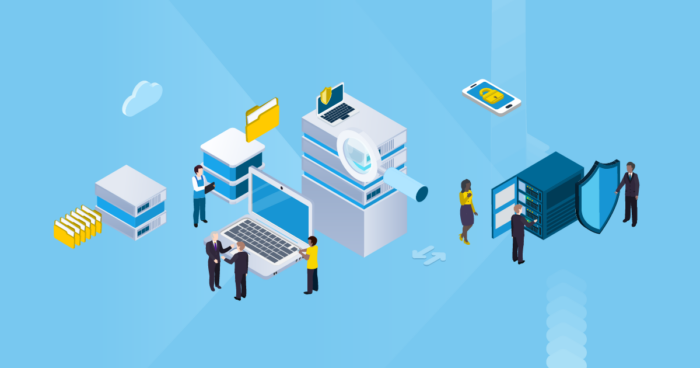
Data pipelines provide organizations with critical capabilities to enhance security and access control across their systems. When securely configured, they can help ensure organizational data’s accuracy, reliability, and safety by providing a centralized means for controlling data flow from core systems to other systems in the organization’s IT infrastructure. By utilizing proactive data observability and incident management, organizations can ensure that data is accurately collected, processed, and securely stored.

Benefits Of Enhanced Data Pipeline Security
Ensuring a secure data pipeline is critical to any organization’s security strategy. Enhanced security measures protect against cyber attacks and reduce the risk of sensitive data breaches. The benefits of a secure data pipeline include the ability to detect and respond to abnormal network behavior, improved data quality, and increased efficiency by automating security tasks.
In an era where data is the lifeblood of businesses, investing in a secure data pipeline is necessary to maintain customer trust and safeguard highly-sensitive information. Implementing enhanced security measures can seem daunting, but every organization needs to take proactive steps to secure its data pipeline.
The Role Of Access Controls
Access controls are essential to data protection, as they help ensure that only authorized users can access sensitive information. Access controls are security measures that restrict access to a system or data based on the individual user’s identity and the level of access they have been granted by the system administrator.
These measures can include password authentication, biometric authentication, and multi-factor authentication. By implementing access controls, organizations can prevent unauthorized access, minimize the risk of data breaches, and comply with regulatory requirements. Access controls are critical to any data protection strategy and are vital in safeguarding sensitive data from cyberattacks and other security threats.

Improving Data Pipeline Security
In today’s digital age, data integrity and security have become paramount concerns for businesses of all sizes. With hackers and cybercrime on the rise, identifying opportunities to improve your data pipeline security is more important than ever. A comprehensive security strategy must encompass all aspects of data processing, from collection to storage and access.
Regularly reviewing your security protocols and updating your technology and infrastructure can reduce the risk of data breaches and keep your sensitive information safe. Strong collaboration between IT, security, and business stakeholders is essential to maintaining a proactive stance on data security. With careful planning and investment, businesses can create a robust security framework to protect their valuable data and maintain the trust of their customers.
Implementing Advanced Security Features With Automation
In today’s digital age, maintaining the security of your company’s data is of utmost importance. Implementing advanced security features such as multi-factor authentication, intrusion detection, and encryption is essential. However, it can be a daunting task to set up and manage these features manually. This is where automation comes in.
By using automated tools, you can streamline implementing and managing these advanced security features, freeing up time and resources for other essential tasks. With automation, you can also ensure that all security protocols are consistently enforced and regularly updated to keep up with emerging threats. Don’t leave the security of your company’s data to chance- implement advanced security features with automation.

Establishing A Secure Data Transfer Protocol
Securing sensitive data has become more critical in today’s digital age. Establishing a reliable and secure data transfer protocol is crucial for businesses and organizations to protect their valuable information from cyber threats. The protocol should ensure that data is encrypted, transmitted securely, and can only be accessed by authorized individuals.
By implementing an effective data transfer protocol, businesses can safeguard their sensitive data and prevent unauthorized access or data breaches. This not only protects the privacy and security of their clients but also maintains the integrity and reputation of the business. Prioritizing data security is essential to mitigate a data breach’s risks and potential consequences.
Monitoring and Auditing Data Pipeline Activities
To effectively monitor and audit data pipeline activities, organizations should consider implementing the following measures:
- Implement Logging: Logs should be enabled for all pipeline activities, including data ingestion, transformation, and output. The logs should be configured to capture key information such as timestamps, source and destination IPs, user IDs, and data payloads.
- Use SIEM tools: Security Information and Event Management (SIEM) tools can help aggregate and analyze logs from multiple sources to identify potential security threats and data breaches. These tools can also provide real-time alerts to help security teams quickly respond to potential threats.
- Conduct Regular Audits: Regular audits should be conducted to ensure that the pipeline is functioning as expected and that there are no security vulnerabilities or data leaks. These audits can also help identify any gaps in the security controls and ensure compliance with regulatory requirements.
- Establish Access Controls: Access controls should be established to restrict access to sensitive data and to ensure that only authorized personnel can access the data pipeline. Role-based access controls (RBAC) can be used to assign specific permissions to users based on their job function and responsibilities.
- Encrypt Data: Data should be encrypted both in transit and at rest to prevent unauthorized access to sensitive information. Data encryption can be implemented at various points in the pipeline, such as during data transmission or storage.
- Implement Authentication and Authorization: Authentication and authorization mechanisms should be implemented to ensure that only authorized users can access the data pipeline. This can include using secure passwords, multi-factor authentication (MFA), and other methods to verify user identity.
- Perform Penetration Testing: Regular penetration testing should be conducted to identify potential security vulnerabilities and ensure that security controls are working as expected. This can help identify weaknesses in the pipeline and allow organizations to address them before they are exploited.

Final Thoughts
Having an approach for proactive data observability and incident management can help you prevent, detect and respond to security incidents quickly. Establishing a secure data transfer protocol and using automation to implement advanced security features are essential to protecting your valuable data.
Reviewing your security protocols and updating your technology and infrastructure can help you avoid potential threats and ensure the privacy and security of your customer’s sensitive information. Implementing these measures will help you protect your data, keep your customers’ trust, and ensure your business’s success.











